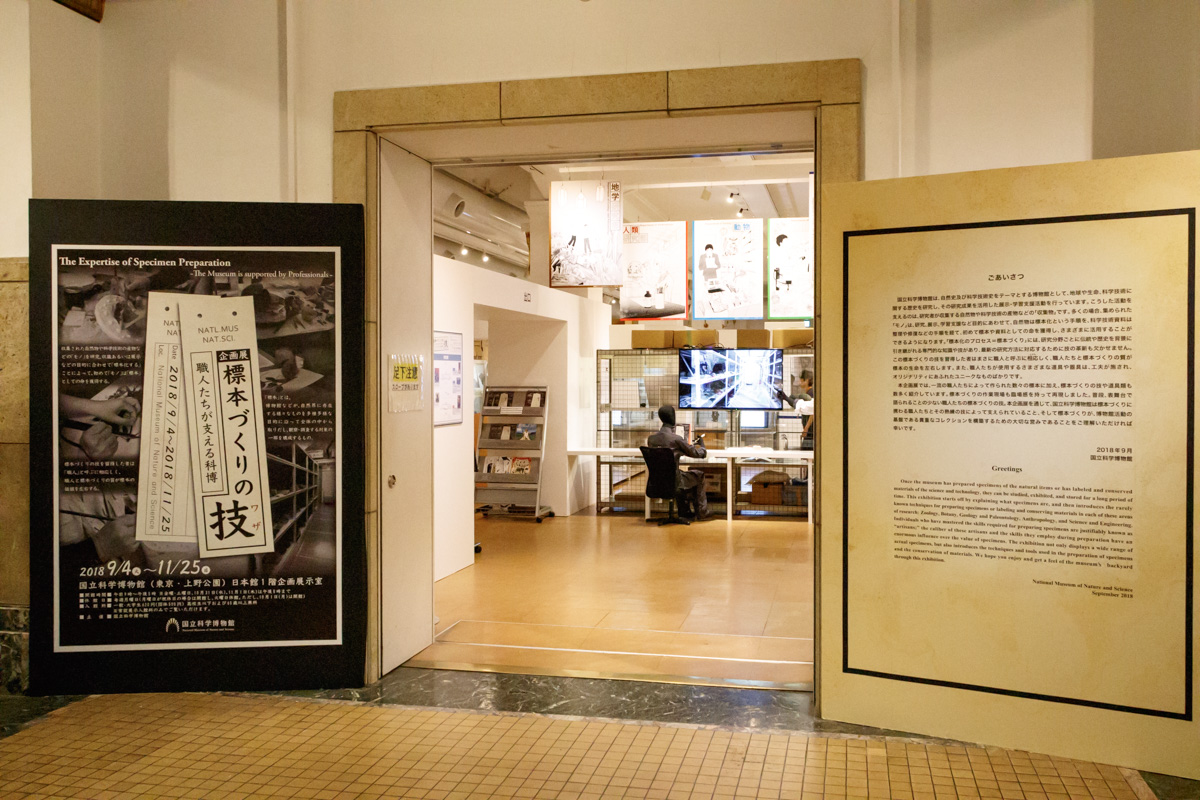
At the National Science Museum, we will hold a planning exhibition "Techniques for specimen making (Waza) – Exhibition that is supported by craftsmen -" from September 4 (Tuesday) to November 25 (Sun) in 2018. Since I participated in the press exhibition held before that, I will tell you how it is.
A sample is a part of the object of observation and survey by taking miscellaneous things existing in the natural world out of the whole in accordance with a wide variety of purposes.
Without specimens the museum will not be established.
In this exhibition, we will focus on the craftsmen who are engaged in making specimens and approach the backside of the museum.
This exhibition is divided into two main sections, "Specimens and something?" "Let's go through the specimen making room!" And each of the five research departments introduces the "technique" of sample preparation in detail.
What is a specimen?
Humanity research department
Human Resources Research Dept. conducts morphologic and molecular anthropological research to gather specimen data to elucidate 'evolution of human being' and 'Japanese history'.
Immediately after the entrance, "Muella of the Incense Empire" welcomes you. It seems that new information is appearing more and more rapidly with the latest technology. I convey the importance of keeping specimens as good as possible in the future.
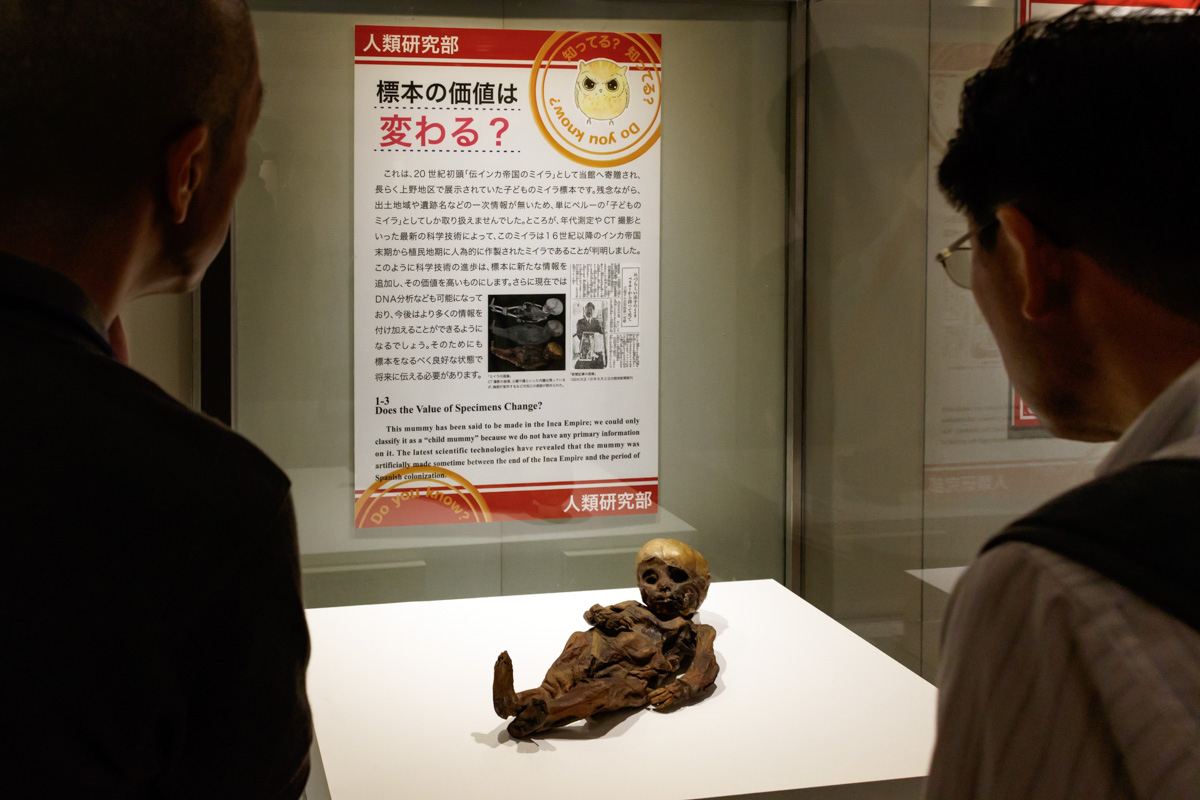
Plant research department
Plants are not only specimens of dried leaves that are dried and attached to mounts, immersion specimens preserved by immersion in ethanol or the like, and large fruits that can not be stuck on a mountain are stereoscopically dried There are various types of specimens such as dried fruits and seed specimens saved.
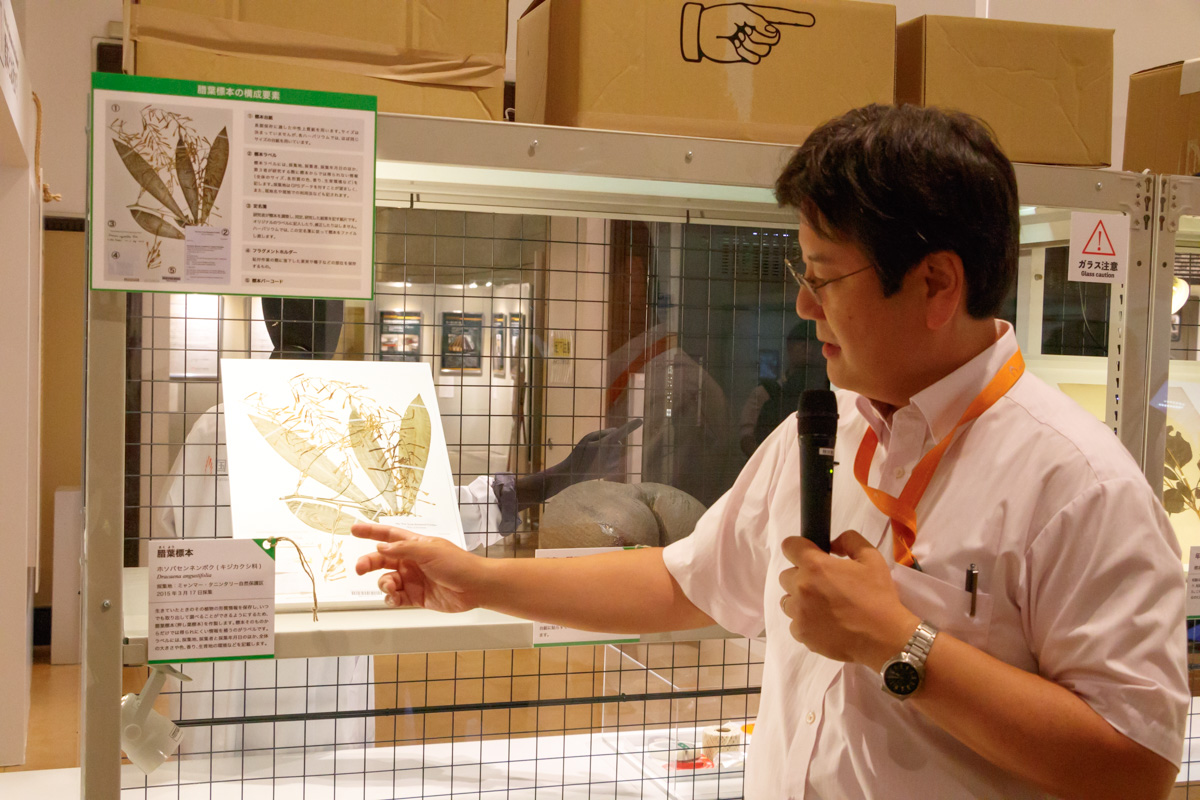
Department of Geology
Keep rocks and minerals as specimens as it is or store flakes made by scraping rocks etc. for observation and chemical analysis. Fossils taken from rocks will be paleose specimens. If fossils are valuable, we may make replicas.
The picture is a three-dimensional fossil of a plant called "plant bodies". You can examine how to attach each part etc in detail.
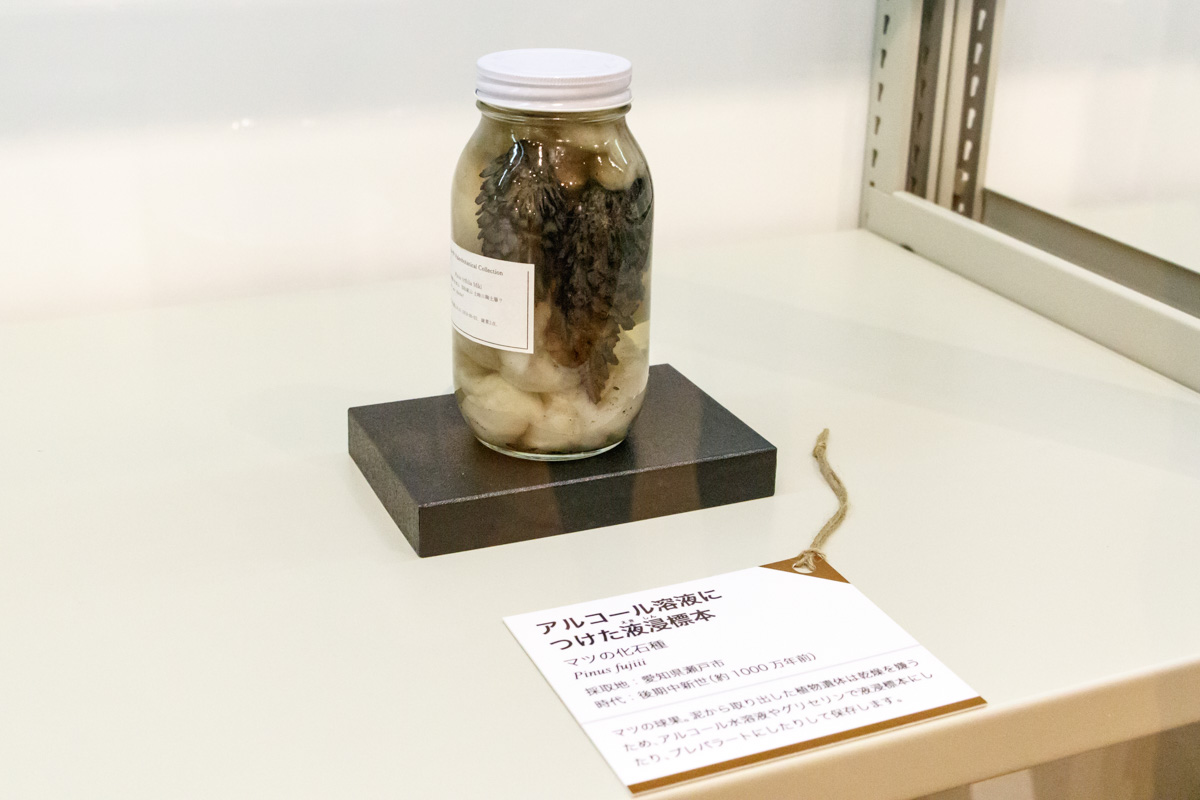
Science and Engineering Research Dept.
In addition to specimens such as meteorites, we have materials such as large machines and observation instruments, and data obtained from them. Basically there are only one specimen and material, so we may make replicas, which are also valuable museum materials.
This painting depicts the state of Sakurajima eruption in the Taisho era, but it is stored not only as a work of art but as research material of the earthquake.
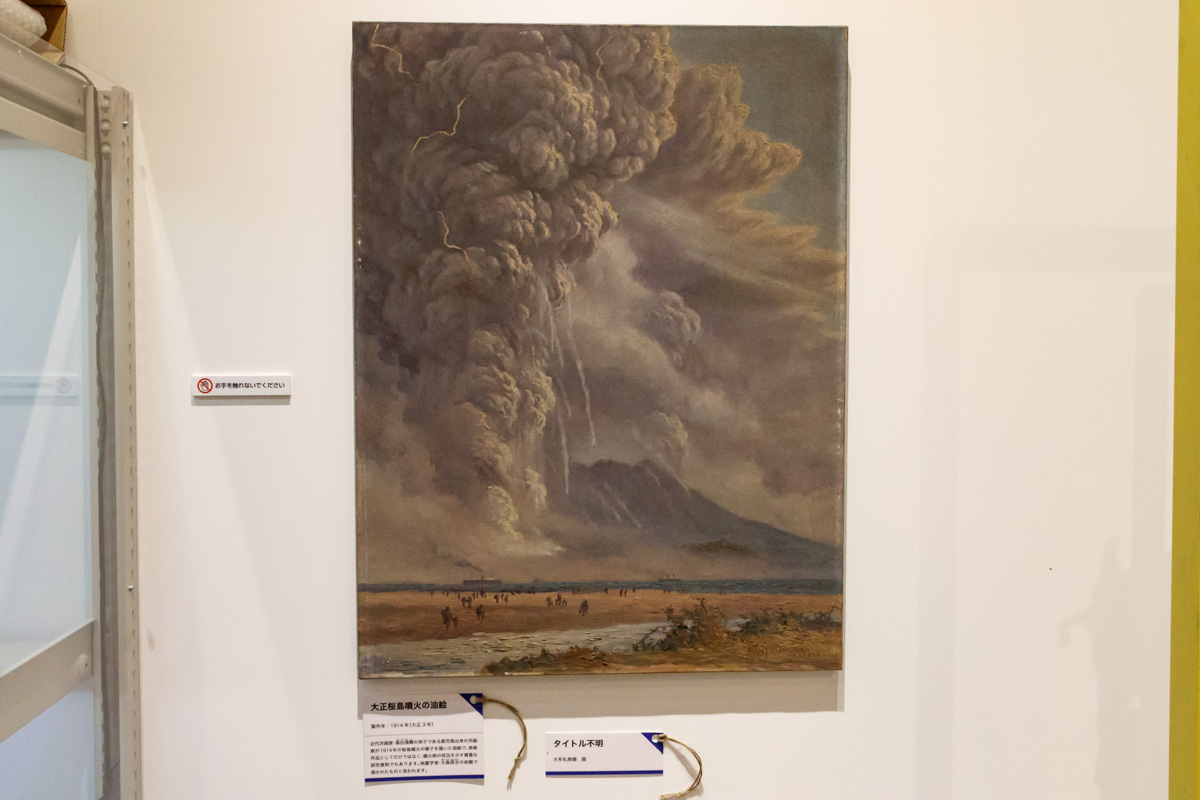
Animal research department
Things sampled / found outdoors, things donated from zoos and aquariums, etc. Origin of specimens varies. One individual may be kept as a whole specimen, or it may be specimen individually from skeleton, fur, parasite etc. from one individual. Research contents and purposes are diverse.

This is introducing a new attempt to create "Nakago (covering fur)" using "Photogrammy" method to restore 3D model from multiple pictures.
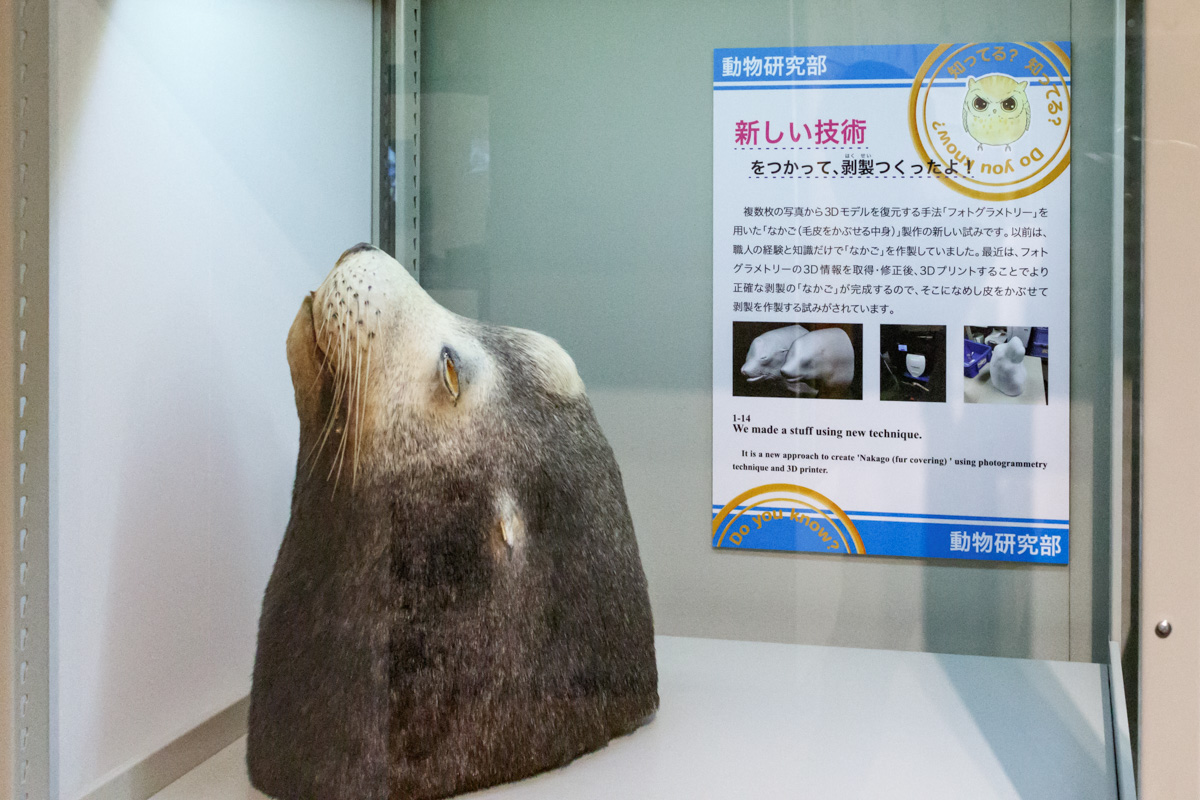
Let's look through the sample making room!
Human Bone Restoration Room
Repair of human bone that can be said as the foundation of anthropology. Clean the fragile pieces, then assemble and bond them. It will take 30 hours to repair one skull.
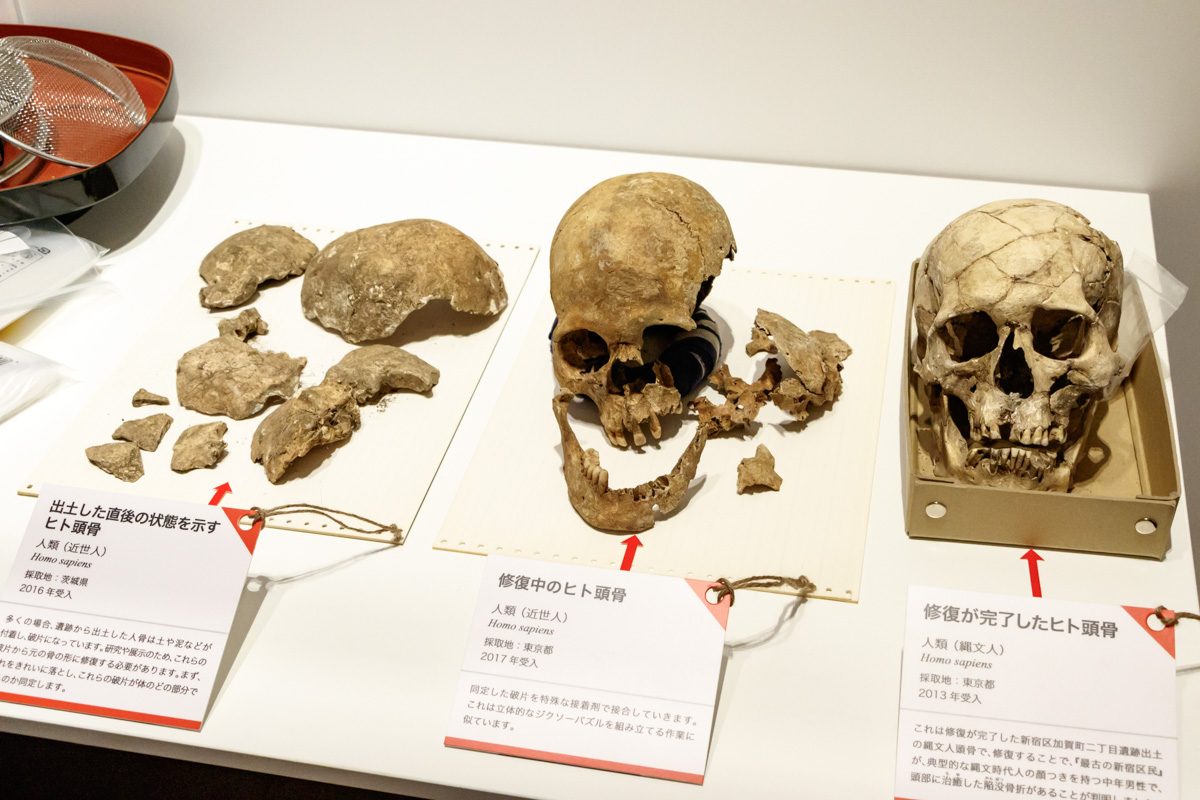
Hakuba specimen preparation room
Use a soldering iron to stick the plant to the mount with a special tape. Since the specimens are valuable research materials afterwards, skilled skill is required to properly stick the plants without hurting them.
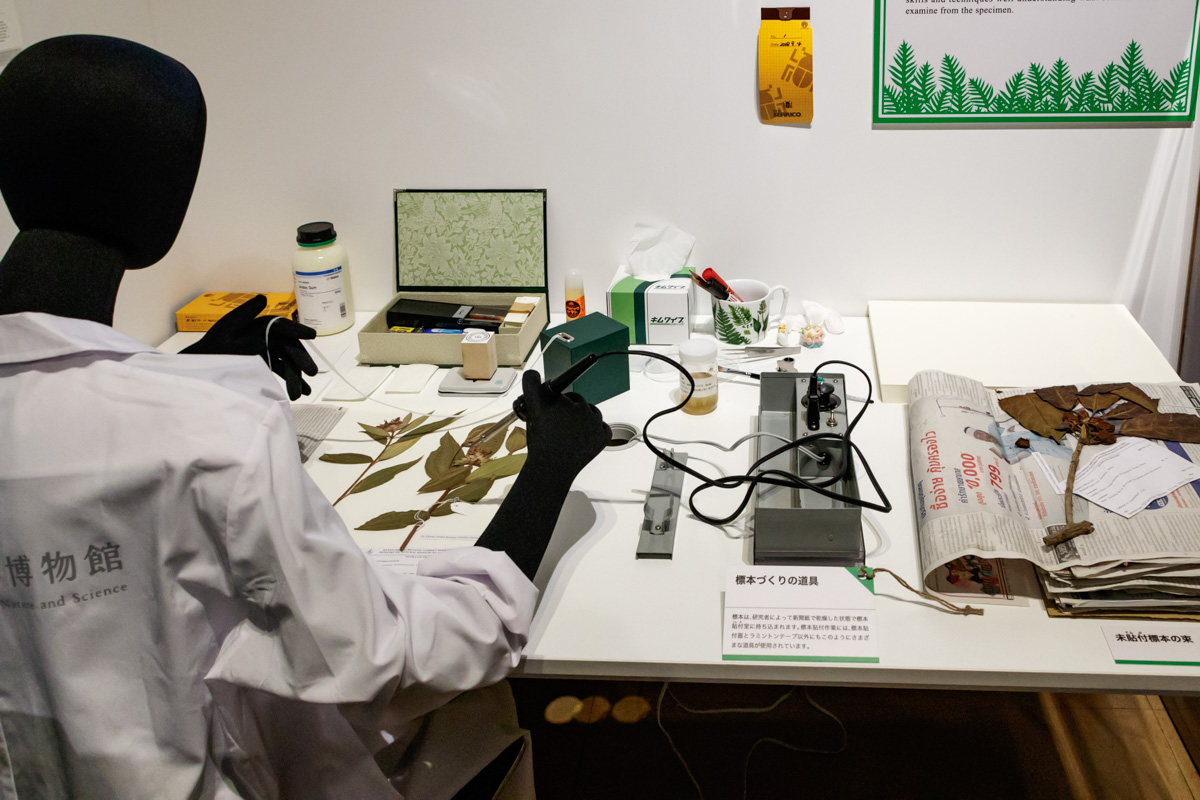
Fossil cleaning room
It is a room where a "cleaning" work is performed to remove unnecessary rocks around in order to take out the fossils normally buried in rocks.
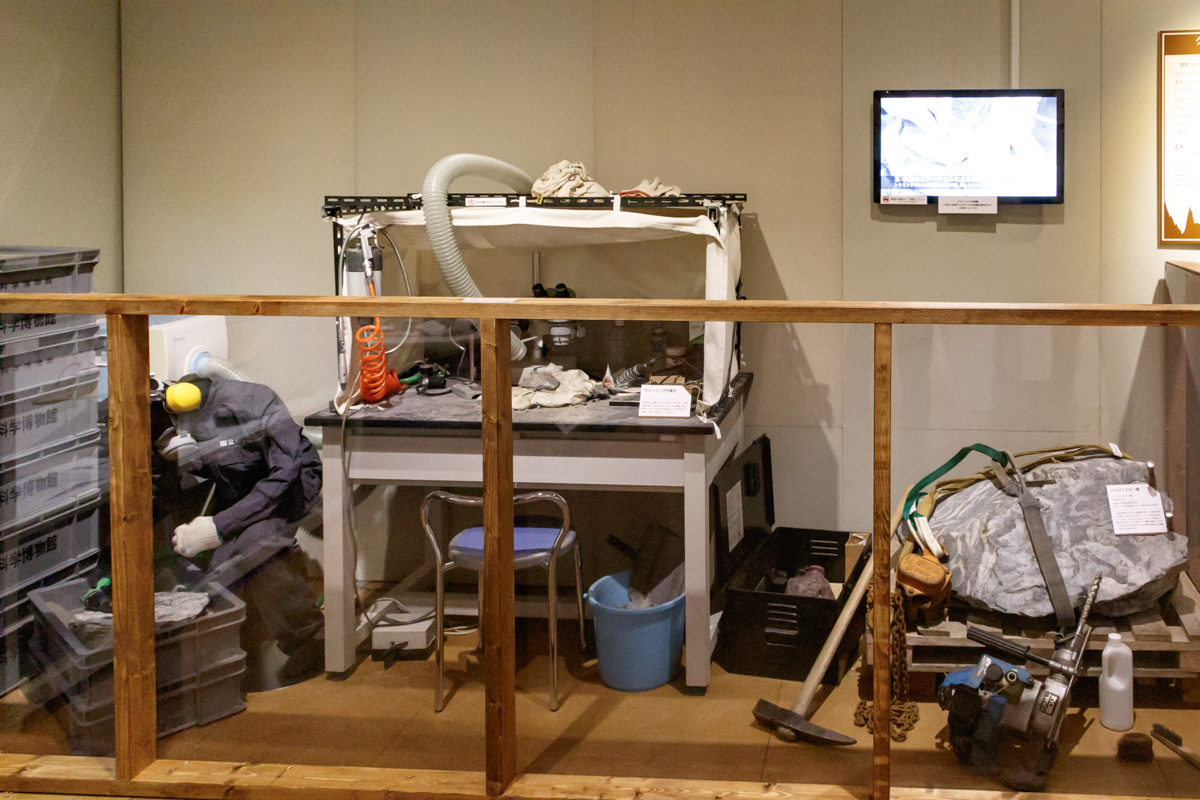
Permian fossils "Shikamaiia" which had long been considered impossible to clean. It was buried in the big rock which can be seen on the right in the above picture, but finally the shape was revealed as a result of cleaning for a year and a half with special equipment. It is the gift of craftsmen's obsession. The real thing is divided into the front four parts, the back is the restoration model.

Fossil replica fabrication room
A fossil replica is being created at a scene like a sculptor's atelier.

It is made from a real sample by taking a mold with silicone and pouring resin into that mold. The elaborate replicas thus created are used in research and exhibitions in the same way as real samples.

Room for reference arrangement
This is an exhibition about the handling of specimens and materials of the science and engineering department. Large amounts of paper materials are stored in containers made of weakly alkaline or neutral paper to prevent deterioration.
In order to preserve the raw material as it is difficult to use it, digitize it by shooting and scanning to create a replica. It seems that it became possible to create a three dimensional replica by spreading 3D printers. At the venue, you can actually touch the screen of the tablet and observe the meteorite at 360 degrees.
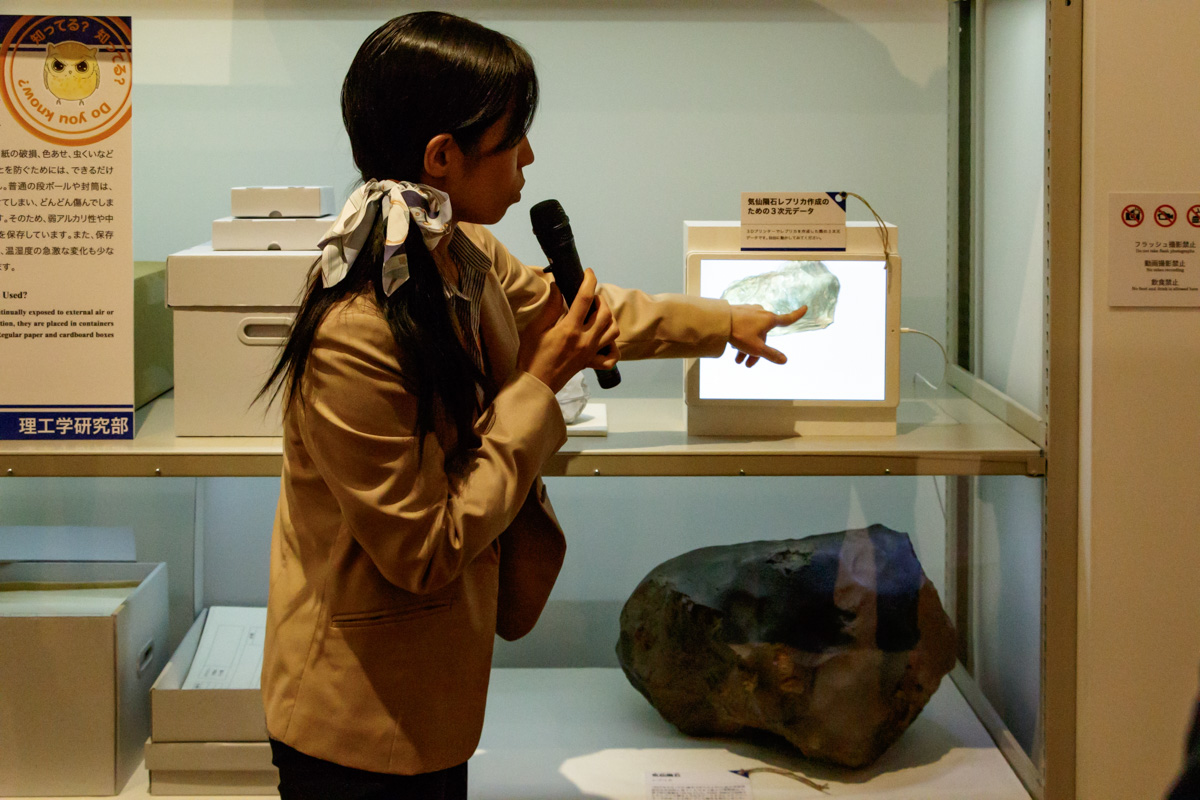
A room of a wing
Behind the desk are insects, needles, wing wings used for preparing wing specimens, and so on.
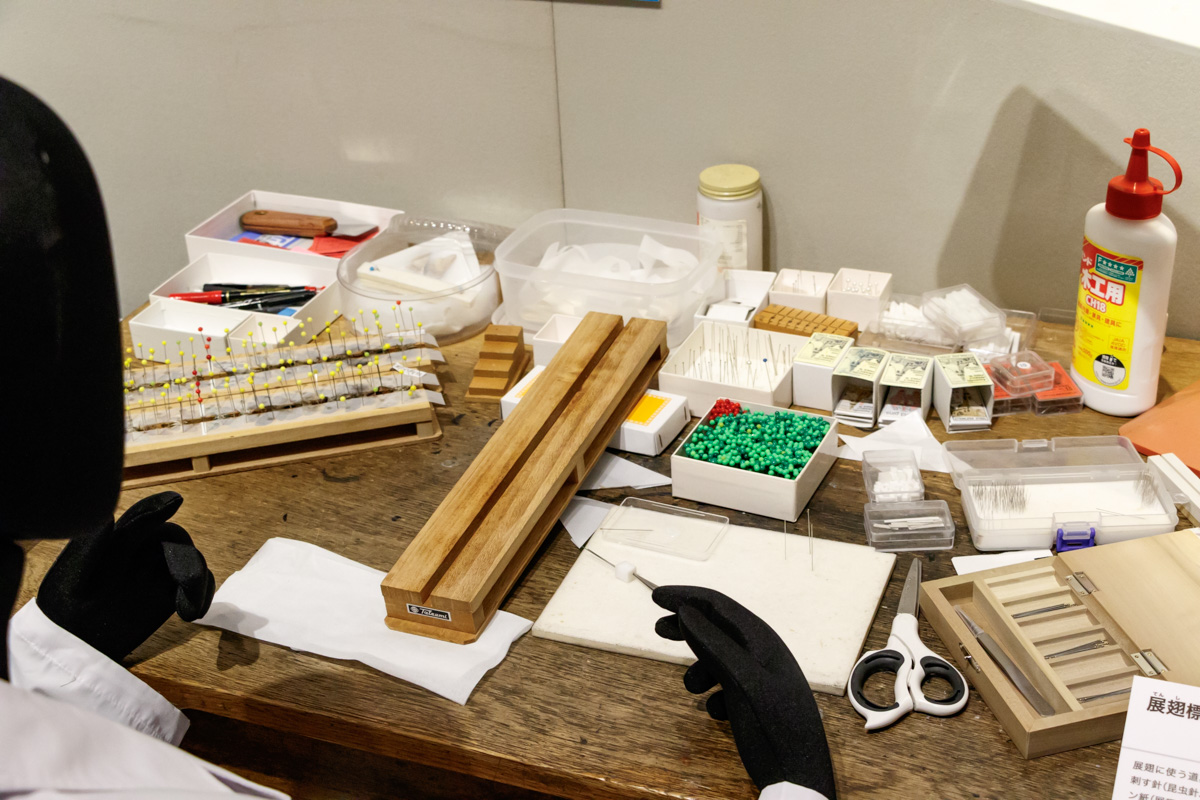
Hair temporary stuffed room (Junior high school students)
Preliminary stripping of specialized fur for research use. Basically leave only the skin, feathers and animal hair, peel off and dry.
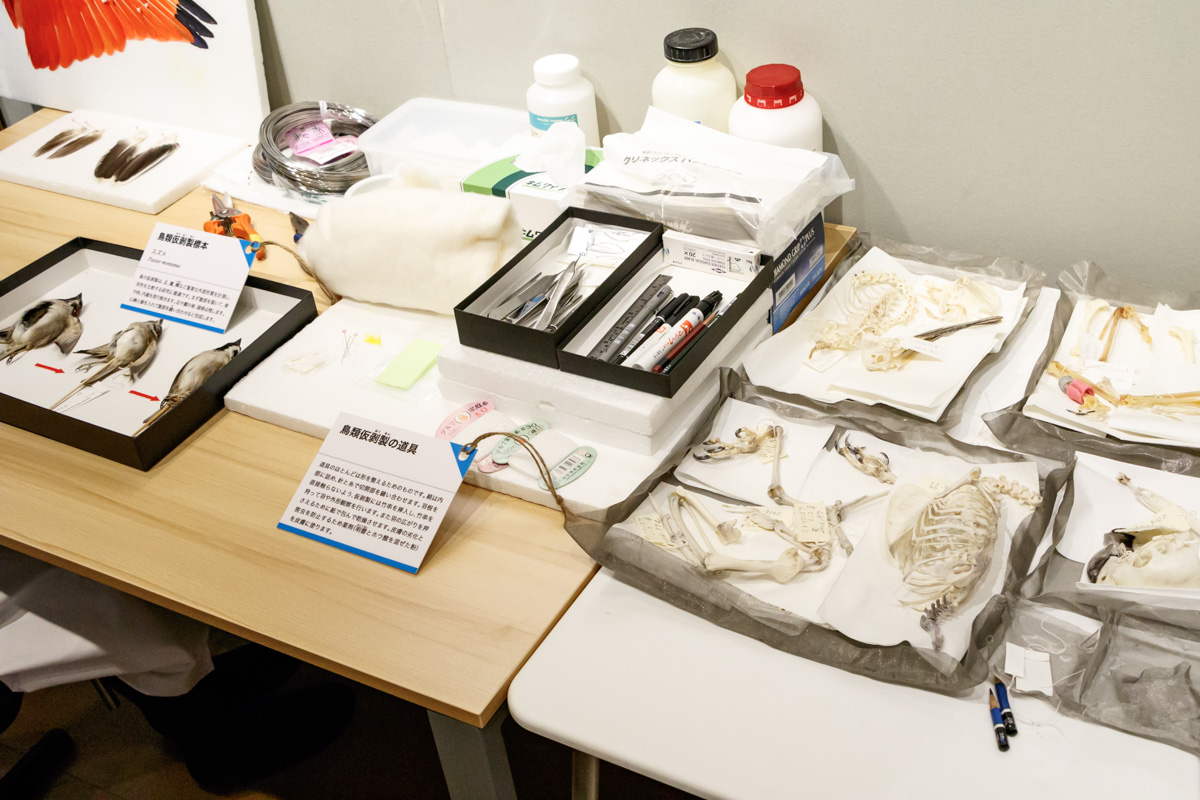
While comparing with the same pinnacle (kikkuru), we are comparing the newborns of Tomado and Tomadoru completely different colors. The sea urchin seal is on the sea ice, and Todo gives birth at the rocky place, so the newborn's breasted hair seems to be protecting color to protect herself from foreign enemies.
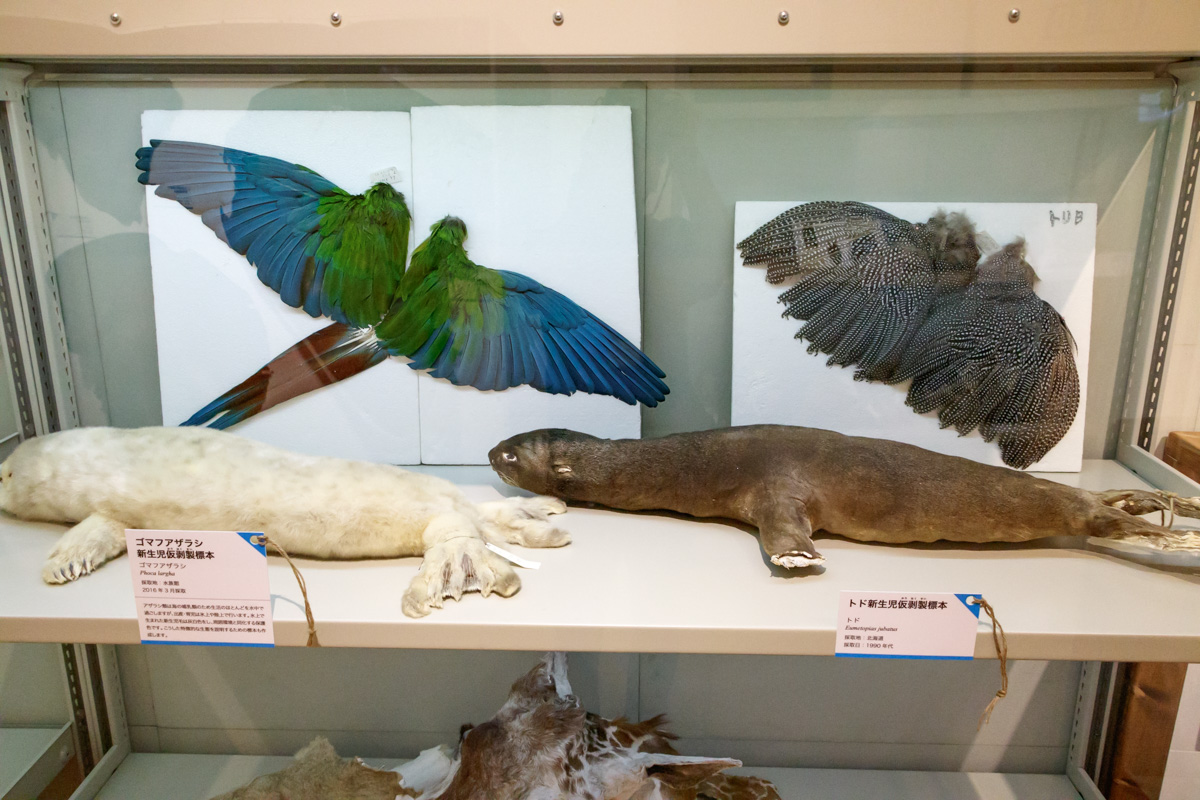
Elephant's ear. The shape is different depending on the type.
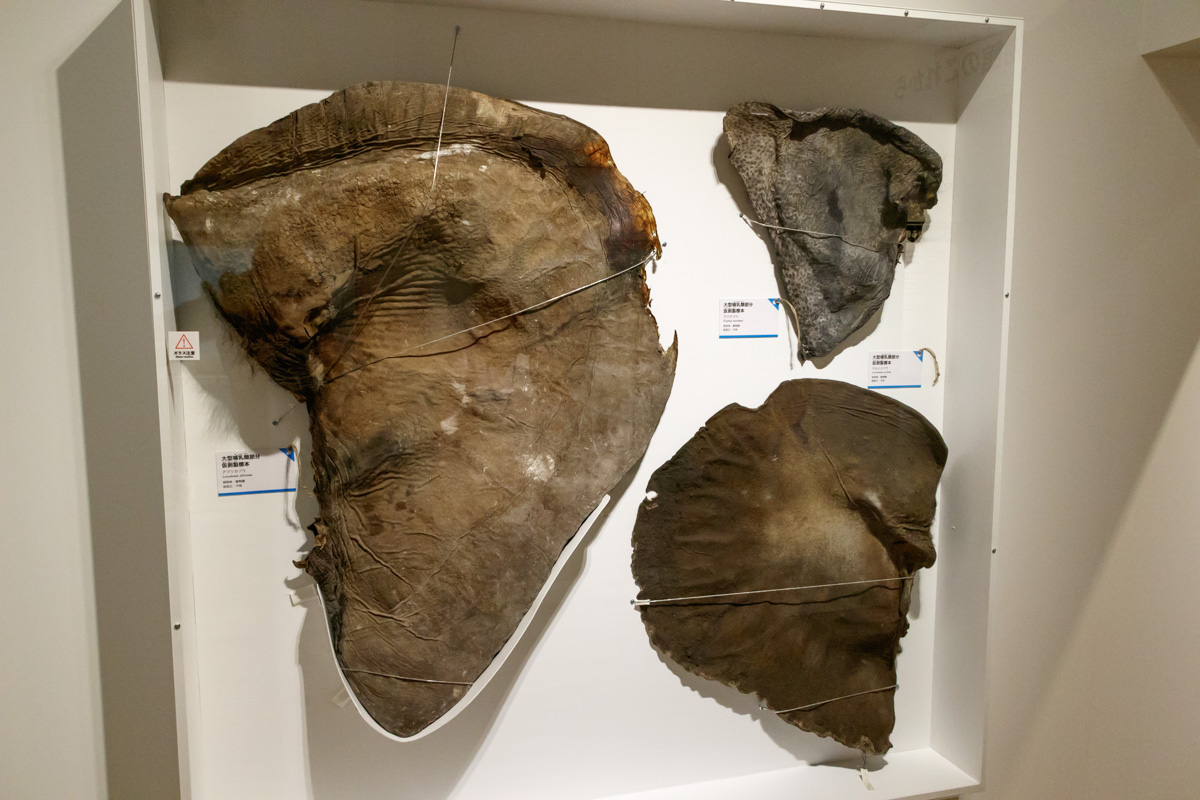
Do you know that it is installed in the venue? Check the legume knowledge on the panel.
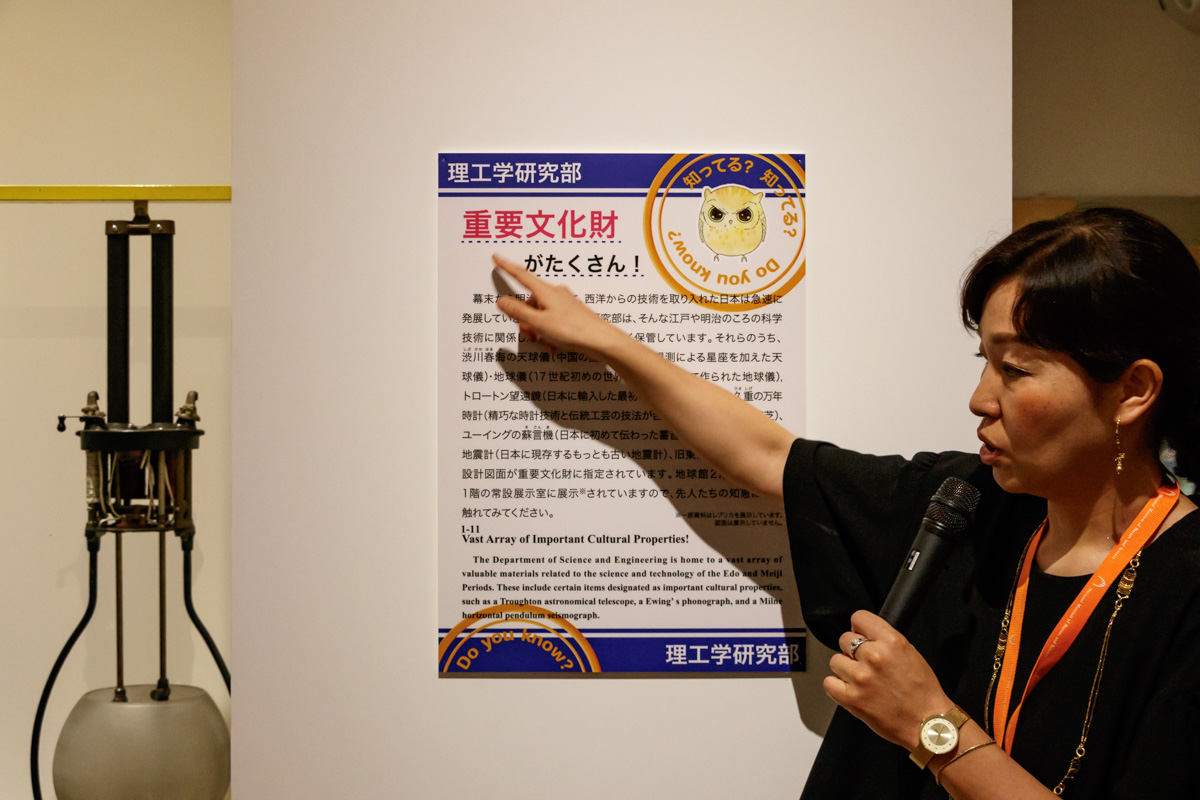
There is also a section where you can learn how specimens are being used. Also recommended for children.
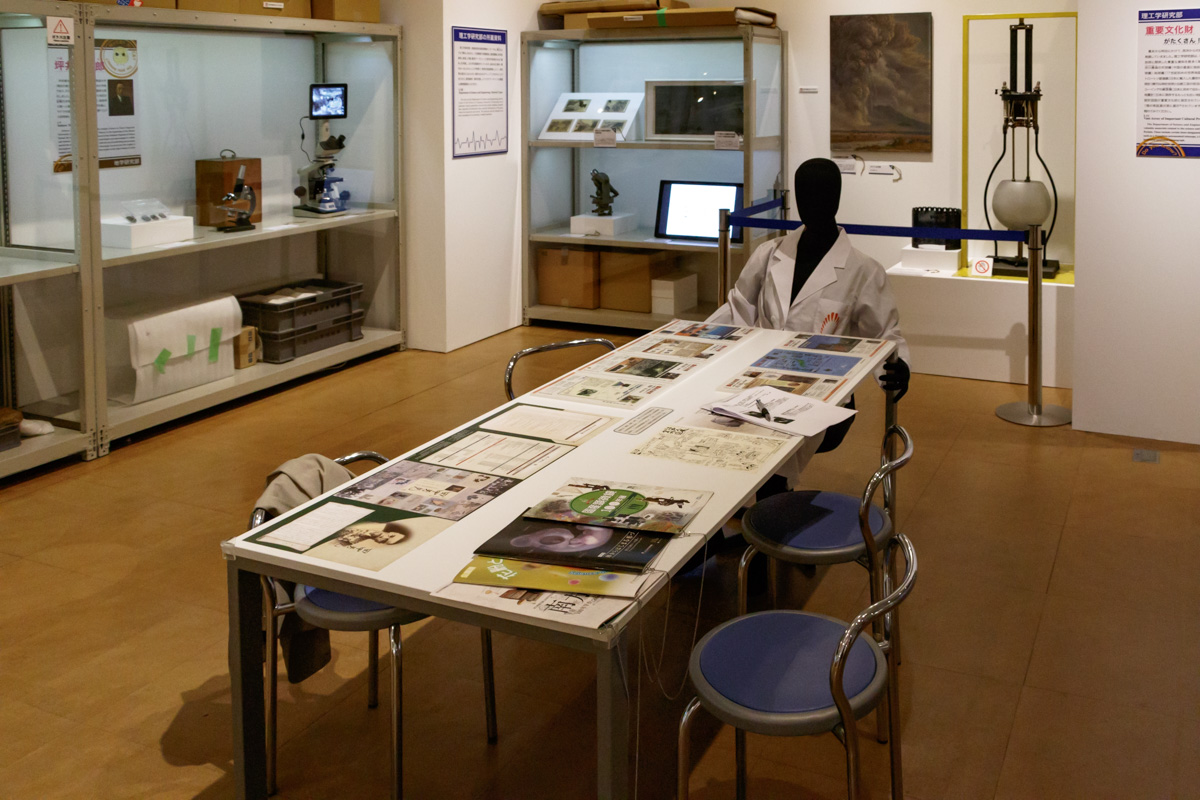
This exhibition is "Monthly! Spirits "(Shogakkan) series magazine in the series" Unbelievable thing! "Illustrations of manga are displayed at the entrance top of the entrance. Creator Takamori Hayami has a history of actually making specimens at the hotel, and the hotel cooperates in the production of manga.
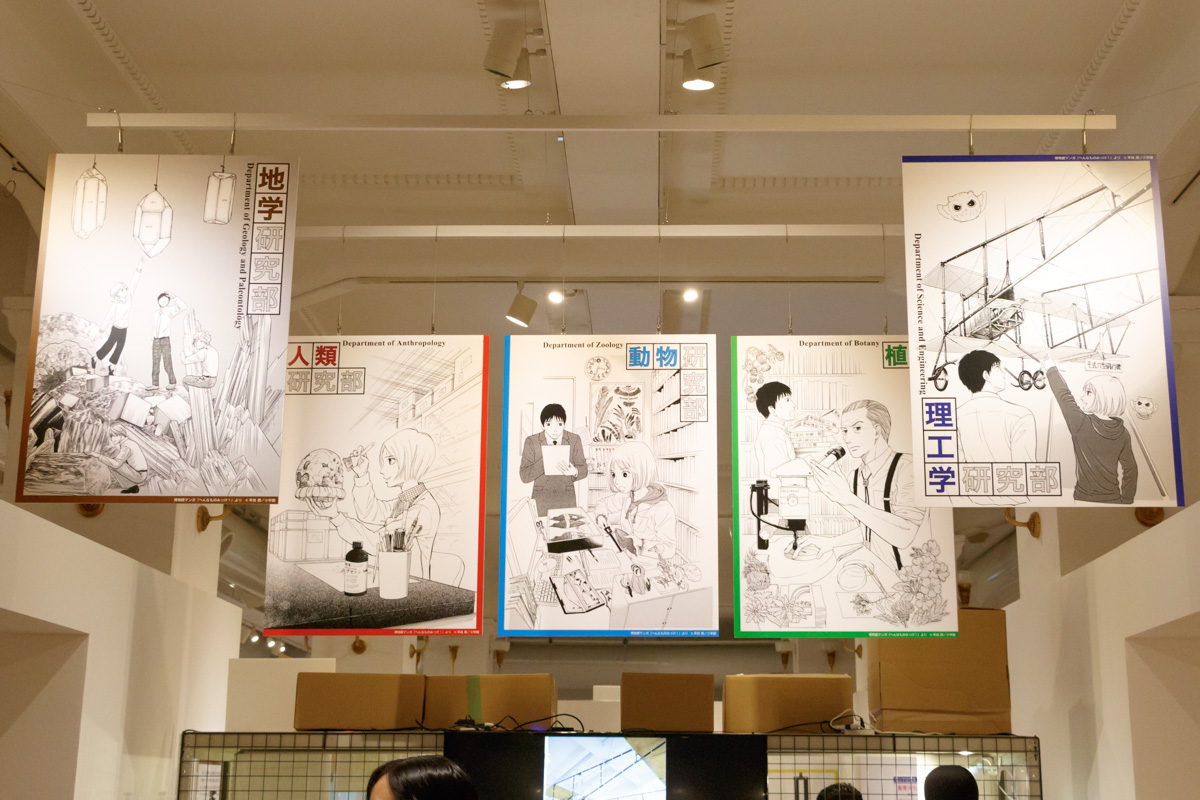
At the venue, the special edition of the National Science Museum "Unbelievable! "You can get a trial reading booklet for free (there are limited number of copies). You can learn about the backside of the museum fun and comfortable, so please take it in hand.

During the exhibition, a demonstration section of sample making by craftsmen is also set up. It is a unique opportunity to see craftsmanship in front of me, so do not miss it!
Please check the schedule of the demonstration section at the exhibition official website https://www.kahaku.go.jp/event/2018/09hyouhon/
Outline of the exhibition
| Exhibition name | Exhibition "Art of specimen making (Waza) – Exhibition that the craftsmen support -" |
| Society | September 4 (Tue) – November 25 (Sun) in 2018 |
| Venue | National Science Museum (Ueno Park 7-20, Taito-ku, Tokyo) Planning Room 1st floor, Nihonkan |
| Opening hours | 9 am – 5 pm (Friday, Saturday, October 31 (Wednesday), November 1 (Thursday) until 8:00 pm) |
| closing day | Every Monday (If Monday is a celebration holiday, it opens and closes on Tuesday, but opening on Monday, October 1st) |
| Admission fee | Only permanent exhibition entrance fee can be viewed. (General / undergraduate students: ¥ 620 less than high school students and over 65 years old) |
contact information | National Science Museum Project Promotion Dept. Planning Exhibition Division: Yuko Matsuzawa Ueno Park 7-20 Taito-ku, Tokyo, 110-8718 TEL: 03-5814-9883 FAX: 03-5814-9898 E-mail: kikakuten@kahaku.go.jp |
| National Science Museum Official website | http://www.kahaku.go.jp/ |


